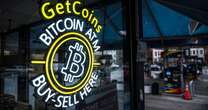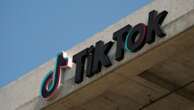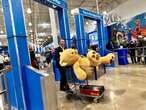On Tuesday, Congresswoman Rashida Tlaib took to X with a letter directed at Rodney McMullen, the CEO of Kroger. In it, she expressed her concern about Kroger’s electronic shelving labels (ESLs), as well as the grocery chain’s alleged plans to use facial recognition technology at its digital displays—both tools, she wrote, with potential to be “abused in the pursuit of profit.”
Tlaib isn’t the first U.S. official to voice her trepidation at Kroger’s ESL tech, either. Back in August, Senators Elizabeth Warren and Robert Casey also wrote to McMullen, stating that they were “concerned about whether Kroger and Microsoft are adequately protecting consumers’ data” and laying out an extensive list of questions about the company’s plans for its ESLs (which, as of this writing, Kroger has not publicly responded to).
Both letters have sparked concern—and a healthy dose of shock—from X users, many of whom shared that they had no idea that such technology existed in grocery stores. But despite the fact that public concern is surfacing now, Kroger has actually been working on its ESLs for at least five years, and tells Fast Company it has no plans to use facial recognition in its stores.
Here’s everything we know about Kroger’s ESLs, and what they might mean for consumers.
What is an ESL?
An ESL is essentially the digital version of the price tags typically found throughout grocery stores. For companies, these labels are beneficial because they cut down on the manual labor of updating the tags, can help stores quickly update prices on items and keep track of their inventory, and can even help workers and shoppers identify items through a flashing light system. Some stores are also using the tags to display barcodes with useful information, like nutrition facts.
In an interview with Grocery Dive, Anne Mezzenga, co-CEO of retail blog Omni Talk, explained, “They tackle the big issue of changing prices and the loss that grocery retailers can experience when they don’t have accurate pricing on shelf.” She added that ESLs can help cut down on waste by eliminating the need to print out tags and shelf talkers.
Which grocery stores are using ESLs, and when did they start?
Kroger began using ESLs back in 2018, and currently uses ESLs in at least 500 locations. This June, Walmart announced that it would be rolling out ESLs to 2,300 stores over the next two years after a successful pilot.
Other stores including Schnucks, Hy-Vee, Ahold Delhaize USA, and Dom’s Kitchen & Market, have also embraced the technology in recent years.
Why are people concerned about ESLs?
While industry leaders continue to espouse the usefulness of ESLs, government officials and media are raising several red flags around how the tech might become harmful.
The first issue is the fear that stores might start using ESLs for dynamic or surge pricing. This describes the idea that, in order to turn a higher profit, grocery stores could start adjusting prices depending on time of day, demand, or other factors—similar to something like Uber’s pricing model.
In their letter to Kroger, Warren and Casey wrote, “For example, stores may use this technology to raise the price of turkeys in the days leading up to Thanksgiving, or the price of ice cream on a hot day, causing customers to face unexpected price hikes when they reach the grocery aisle and find themselves unable to afford the groceries that they had originally budgeted for.”
For their parts, both Kroger and Walmart have assured customers that they will not use ESLs for dynamic pricing, and will instead employ the tech to offer shoppers better discounts on items like final clearance goods, for example.
“Kroger’s business model is built on a foundation of lowering prices to attract more customers,” a Kroger spokesperson told Fast Company. “Everything we do is designed to support this strategy, and customers are shopping more with Kroger now than ever because we are fighting inflation and providing great value. To be clear, Kroger does not and has never engaged in ‘surge pricing.’ Any test of electronic shelf tags is designed to lower prices for more customers where it matters most. To suggest otherwise is not true.”
What about facial recognition technology
Another concern Tlaib raised in her letter was that grocery stores might start using facial recognition technology as part of their in-store advertising and pricing efforts. In her letter to Kroger, Tlaib wrote, “the use of facial recognition tools has the potential to invade a customer’s privacy and employ biased price discrimination.”
In 2019, Fast Company explored this issue in an article on an ESL tech. We reported that Kroger was piloting a new technology in one of its stores, called the Enhanced Display for Grocery Environment (EDGE). That year, Kroger told Fast Company that it was teaming up with Microsoft to implement AI-powered facial recognition technology in some of its digital displays.
The companies announced in a 2019 press release, “the EDGE Shelf will enable Kroger to generate new revenue by selling digital advertising space to consumer packaged goods (CPGs) brands. Using video analytics, personalized offers and advertisements can be presented based on customer demographics.”
The proposition, as described to Fast Company, was to use gender and age information to display personalized ads or coupons. Tlaib, Warren, and Casey cited Fast Company’s 2019 article as their main evidence for the idea that Kroger plans to use facial recognition and “use customer data to build personalized profiles of each customer.”
However, according to a Kroger spokesperson, the one-store EDGE pilot described in that 2019 coverage was quickly sunset, and Kroger no longer uses EDGE technology in any of its stores. They added that Kroger is not, and has never, used facial recognition in its stores—nor are they aware of any plans to do so in the future.










No comments